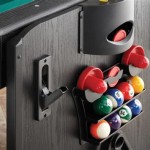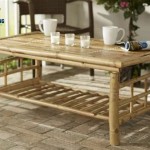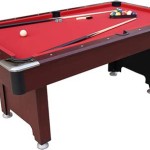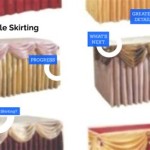Distressed White Coffee Table DIY: A Comprehensive Guide
Transforming a coffee table with a distressed white finish can inject a touch of rustic charm and vintage character into any living space. This DIY project allows for customization, recycling of existing furniture, and the satisfaction of creating a unique piece. The process, while requiring patience and attention to detail, is relatively straightforward and can be accomplished with basic tools and readily available materials. This guide provides a comprehensive overview of how to achieve a professionally distressed white finish on a coffee table, covering surface preparation, painting techniques, distressing methods, and sealing for durability.
Key Point 1: Preparation is Paramount
Achieving a successful distressed white finish hinges on meticulous preparation. This stage sets the foundation for the entire project and ensures the paint adheres properly, the distressing is even, and the final product is durable. Neglecting preparation can lead to peeling paint, uneven texture, and a less than desirable outcome.
The first step involves thoroughly cleaning the coffee table. Remove any dust, dirt, grease, or existing finishes. Use a degreaser or soapy water to scrub the surface vigorously. Rinse thoroughly and allow the table to dry completely. This clean surface is crucial for proper paint adhesion.
Next, assess the existing finish. If the coffee table has a glossy or slick surface, sanding is essential. Use a medium-grit sandpaper (around 120-150 grit) to lightly sand the entire surface. The goal is not to remove the existing finish completely but to create a slightly rough texture that the primer can grip onto. This is known as “scuff sanding.” After sanding, wipe down the table with a tack cloth to remove any sanding dust. Failure to remove the dust will result in a gritty paint finish.
If the coffee table has significant imperfections such as deep scratches, dents, or gouges, these should be addressed before priming. Use wood filler to fill in these imperfections. Apply the filler according to the manufacturer's instructions, allowing it to dry completely. Once dry, sand the filled areas smooth with fine-grit sandpaper (220 grit) to blend them seamlessly with the surrounding surface. Again, remove all sanding dust with a tack cloth.
The final step in the preparation phase is applying a primer. Choose a primer specifically designed for furniture or paint adhesion. Apply a thin, even coat of primer to the entire coffee table. Primer serves several important functions: it seals the existing finish, provides a uniform base for the paint, and improves paint adhesion. Allow the primer to dry completely according to the manufacturer’s instructions, typically at least 24 hours. Once dry, lightly sand the primed surface with fine-grit sandpaper (220 grit) to smooth out any imperfections and create an even better surface for painting. Remove all sanding dust before proceeding.
Key Point 2: Painting and Distressing Techniques
The painting and distressing phases are where the coffee table's character truly emerges. Choosing the right paint and employing effective distressing techniques are paramount to achieving the desired aesthetic. The type of paint will affect the durability and look of the finished piece, while the distressing technique will determine the level of wear and age.
Selecting the appropriate paint is crucial. Chalk paint is a popular choice for distressed finishes due to its matte finish, excellent adhesion, and ease of distressing. Alternatively, acrylic latex paint can be used, but it may require more effort during the distressing process. Consider using a paint specifically designed for furniture for increased durability. Select a high-quality white paint that complements the desired aesthetic. Experimenting with different shades of white, from bright white to antique white, can drastically alter the final appearance.
Apply the first coat of white paint in thin, even strokes, following the grain of the wood. Avoid applying too much paint at once, as this can lead to drips and uneven coverage. Allow the first coat to dry completely according to the manufacturer's instructions. Once dry, lightly sand the surface with fine-grit sandpaper (220 grit) to smooth out any imperfections and create a better surface for the second coat. Remove all sanding dust before proceeding.
Apply a second coat of white paint, again in thin, even strokes. Ensure complete coverage, paying attention to edges and corners. Allow the second coat to dry completely according to the manufacturer's instructions. This second coat provides a uniform and durable base for the distressing process.
Once the paint is completely dry, the distressing process can begin. There are several methods for creating a distressed look, each resulting in a slightly different effect. One common method involves using sandpaper. Use medium-grit sandpaper (120-150 grit) to lightly sand away the paint in areas where natural wear and tear would occur, such as edges, corners, and around hardware. Apply varying degrees of pressure to create a more natural and varied look. Consider using a sanding block for more control.
Another distressing technique involves using a damp cloth to wipe away the paint while it is still slightly wet. This method is particularly effective with chalk paint. Apply a small amount of water to a clean cloth and gently rub away the paint in desired areas. This creates a softer, more subtle distressed effect.
A dry brush technique can also be employed. Dip a dry brush into the white paint and then wipe off most of the paint onto a paper towel. Lightly brush the surface of the coffee table, applying minimal pressure. This creates a subtle, textured effect that mimics the look of aged paint. This technique works well over areas already sanded or wiped down.
Experiment with different distressing techniques to achieve the desired look. Consider using a combination of methods to create a more complex and realistic distressed finish. Remember to step back and assess the overall appearance frequently, adjusting the distressing as needed. The goal is to create a look that appears natural and authentic.
Key Point 3: Sealing and Protection
Sealing the distressed white finish is crucial for protecting the paint and ensuring the longevity of the coffee table. A sealant provides a barrier against moisture, scratches, and everyday wear and tear, preventing the distressed finish from becoming further damaged or altered. The choice of sealant will influence the final appearance and durability of the piece.
Several types of sealants are suitable for protecting a distressed white finish. Paste wax is a classic choice, providing a soft, matte finish and a subtle sheen. It enhances the distressed look while offering good protection against scratches and moisture. Apply the wax with a clean cloth, working it into the surface in a circular motion. Allow the wax to dry according to the manufacturer's instructions, typically for 20-30 minutes. Then, buff the surface with a clean cloth to a soft sheen. This buffing process adds to the protection and brings out the beauty of the distress work. Multiple coats of wax can be applied for increased protection.
Polyurethane is another option, offering a more durable and water-resistant finish. It is available in various sheens, from matte to gloss. A matte or satin polyurethane is generally preferred for a distressed white finish, as it avoids creating an overly shiny or modern look. Apply the polyurethane in thin, even coats, using a brush or sprayer. Allow each coat to dry completely according to the manufacturer's instructions. Lightly sand between coats with fine-grit sandpaper (220 grit) to smooth out any imperfections and ensure good adhesion. Apply at least two coats of polyurethane for optimal protection.
Water-based polycrylic is a good alternative to polyurethane, offering similar protection with lower odor and easier cleanup. It is also available in various sheens and is less likely to yellow over time compared to oil-based polyurethane. Apply water-based polycrylic in the same manner as polyurethane, following the manufacturer's instructions for drying times and sanding between coats.
Regardless of the sealant chosen, applying it correctly is essential. Ensure the surface is clean and free of dust before applying the sealant. Apply the sealant in a well-ventilated area, following the manufacturer's safety precautions. Avoid applying too much sealant at once, as this can lead to drips and uneven coverage. Apply thin, even coats and allow each coat to dry completely before applying the next. This ensures a durable and professional-looking finish.
Once the sealant is completely dry, allow the coffee table to cure for several days before placing items on it. This allows the sealant to fully harden and provide maximum protection. This curing period is critical for ensuring the long-term durability of the distressed white finish.

How To Whitewash Distress Furniture Diy Farmhouse Coffee Table Simply Taralynn Food Lifestyle Blog

Diy World Market Coffee Table Makeover Inspiration Farmhouse

Restoration Hardware Inspired Barade Coffee Table Simplicity In The South

How To Distress Wood Furniture With Milk Paint And Wet Rag Sanding Simplicity In The South

How To Whitewash Distress Furniture Diy Farmhouse Coffee Table Easy Budget Friendly

How To Bleach Wood Furniture Vintage Coffee Table Makeover

Diy Coffee Table Rustic X

Rustic Baer Square Farmhouse Coffee Table All Painted Distressed The Lovemade Home

Rustic X Coffee Table Ana White

Whitewashed Distressed Coffee Table Shabby Chic Farmhouse Decor Living Room








